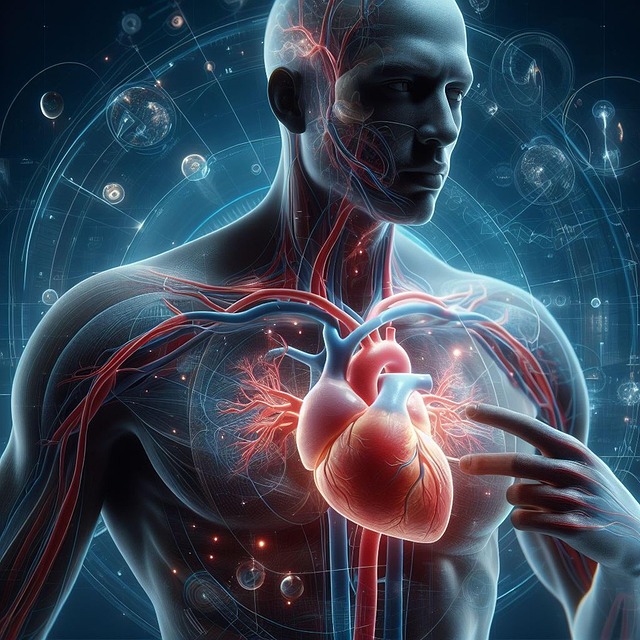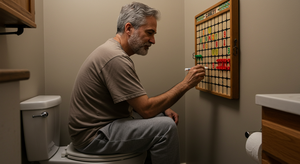Despite my several articles on the real story about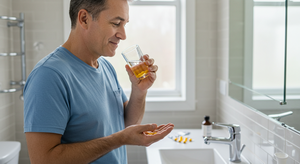 cholesterol, I still hear from many of my patients that they are taking statins to lower their cholesterol levels. Fortunately, a fix/work-around now exists to mitigate the negative consequences of taking statins. But more about that in a minute. Let’s review for a minute what cholesterol is about. cholesterol, I still hear from many of my patients that they are taking statins to lower their cholesterol levels. Fortunately, a fix/work-around now exists to mitigate the negative consequences of taking statins. But more about that in a minute. Let’s review for a minute what cholesterol is about.
Cholesterol is primarily manufactured in the liver, 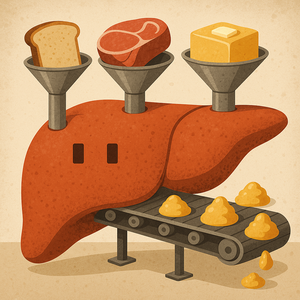 although every cell in the body manufactures some cholesterol as it is used to make the cell walls of every cell in the body. Cholesterol is made from basic building blocks derived from fats, carbohydrates, and even proteins. So basically everything can be used to make cholesterol – that is how important it is to the body. Back in the old days, doctors used to think that eating cholesterol would raise your levels, but that story has been completely disproven. Any food can be used to make cholesterol, and eating a lot of high-cholesterol food does not raise your cholesterol levels. So you can let that one go. Having high cholesterol levels means something is telling the liver to make extra cholesterol. although every cell in the body manufactures some cholesterol as it is used to make the cell walls of every cell in the body. Cholesterol is made from basic building blocks derived from fats, carbohydrates, and even proteins. So basically everything can be used to make cholesterol – that is how important it is to the body. Back in the old days, doctors used to think that eating cholesterol would raise your levels, but that story has been completely disproven. Any food can be used to make cholesterol, and eating a lot of high-cholesterol food does not raise your cholesterol levels. So you can let that one go. Having high cholesterol levels means something is telling the liver to make extra cholesterol.
Interestingly, when I research just what does trigger 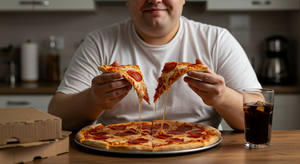 the production of high cholesterol levels, the answer is quite simple – eating. Specifically, it is the higher levels of insulin in response to eating primarily carbohydrates, but proteins as well, that triggers the liver to produce more cholesterol as well as other fatty acids. The chemistry is very complex, involving genetic transcription factors and suppressed degradation of the enzymes that produce cholesterol. But at the end of the day, it is eating, particularly eating too much or too often, that causes high cholesterol production. This problem becomes complicated and amplified by metabolic syndrome, which increases insulin levels due to the body becoming resistant to the effects of insulin. the production of high cholesterol levels, the answer is quite simple – eating. Specifically, it is the higher levels of insulin in response to eating primarily carbohydrates, but proteins as well, that triggers the liver to produce more cholesterol as well as other fatty acids. The chemistry is very complex, involving genetic transcription factors and suppressed degradation of the enzymes that produce cholesterol. But at the end of the day, it is eating, particularly eating too much or too often, that causes high cholesterol production. This problem becomes complicated and amplified by metabolic syndrome, which increases insulin levels due to the body becoming resistant to the effects of insulin.
This would lead one to think that the obvious answer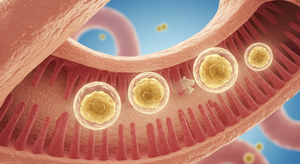 to high cholesterol is to go on a keto diet to lower our insulin levels. But the body already thought out how to outsmart us on that one. On a keto diet, since you are not eating carbs, you instead eat more fats to replace the carbs for energy. That usually means more saturated fats for most folks. Unfortunately, saturated fats increase the absorption of cholesterol from the diet to replace the lack of cholesterol production from the liver under low insulin conditions. You could avoid this if you used only coconut oil as your fat source and used only very low-fat protein sources. Medium and short-chain fats do not have the issue with increasing cholesterol absorption (through chylomicron formation and transport), and coconut oil is mostly these fats. to high cholesterol is to go on a keto diet to lower our insulin levels. But the body already thought out how to outsmart us on that one. On a keto diet, since you are not eating carbs, you instead eat more fats to replace the carbs for energy. That usually means more saturated fats for most folks. Unfortunately, saturated fats increase the absorption of cholesterol from the diet to replace the lack of cholesterol production from the liver under low insulin conditions. You could avoid this if you used only coconut oil as your fat source and used only very low-fat protein sources. Medium and short-chain fats do not have the issue with increasing cholesterol absorption (through chylomicron formation and transport), and coconut oil is mostly these fats.
As you can see, managing cholesterol levels is com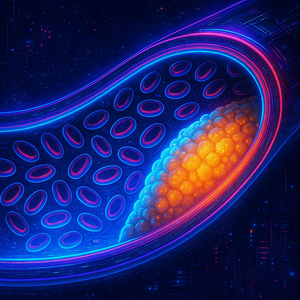 plex. High cholesterol is a byproduct of a broken metabolism rooted in insulin resistance. This is where the real health fight needs to be focused. Medicine is not there yet. And if you already have a lot of vascular damage from inflammation and oxidation tearing up your artery walls, then you will have cholesterol trying to patch up the damage. The problem is that in time the patch becomes another problem itself. Too much cholesterol patching up the walls of the arteries forms atherosclerosis, which then leads to heart attacks and strokes. This is why doctors want you to take statin drugs – to lower cholesterol production. This in no way slows down the damage to your artery walls, but it slows down the buildup of cholesterol in your arteries that might get big enough to break off a chunk and create that heart attack or stroke. plex. High cholesterol is a byproduct of a broken metabolism rooted in insulin resistance. This is where the real health fight needs to be focused. Medicine is not there yet. And if you already have a lot of vascular damage from inflammation and oxidation tearing up your artery walls, then you will have cholesterol trying to patch up the damage. The problem is that in time the patch becomes another problem itself. Too much cholesterol patching up the walls of the arteries forms atherosclerosis, which then leads to heart attacks and strokes. This is why doctors want you to take statin drugs – to lower cholesterol production. This in no way slows down the damage to your artery walls, but it slows down the buildup of cholesterol in your arteries that might get big enough to break off a chunk and create that heart attack or stroke.
So what do you do? Your doctor is responding to blo od work on you that says you have too high a cholesterol level. The fact that it is high says your system is inflamed and damaged. That is the consequence of high insulin, insulin resistance, and the inflammatory signals your body is sending out calling for more cholesterol to help fix things. So do you go on the statins? First I would want to know how bad things are to see if I have time to turn things around naturally. They can scan your arteries to see how much blockage there is from cholesterol. They can do a test called a calcium score which looks at the amount of calcium build up in cholesterol deposits in the arteries around your heart. They can test your blood for markers of inflammation. See where you stand before you jump on the statin train. od work on you that says you have too high a cholesterol level. The fact that it is high says your system is inflamed and damaged. That is the consequence of high insulin, insulin resistance, and the inflammatory signals your body is sending out calling for more cholesterol to help fix things. So do you go on the statins? First I would want to know how bad things are to see if I have time to turn things around naturally. They can scan your arteries to see how much blockage there is from cholesterol. They can do a test called a calcium score which looks at the amount of calcium build up in cholesterol deposits in the arteries around your heart. They can test your blood for markers of inflammation. See where you stand before you jump on the statin train.
Why are statins a concern? The main issue I have with statins is that they drive the body toward type 2 diabetes for a significant number of folks (38%). Cognitive impacts are also a big concern of mine, with memory loss, confusion, cognitive impairment, and neuropathy on the unwanted effects list. The most common reported problem is muscle pain and inflammation. On a chemical level, statins mess up mitochondria health by limiting the production of CoQ10, calcium metabolism, and bone health by interfering with vitamin K2, and protein synthesis and cellular protein function. So the extra effects, the so-called side effects, are multiple and significant. statins is that they drive the body toward type 2 diabetes for a significant number of folks (38%). Cognitive impacts are also a big concern of mine, with memory loss, confusion, cognitive impairment, and neuropathy on the unwanted effects list. The most common reported problem is muscle pain and inflammation. On a chemical level, statins mess up mitochondria health by limiting the production of CoQ10, calcium metabolism, and bone health by interfering with vitamin K2, and protein synthesis and cellular protein function. So the extra effects, the so-called side effects, are multiple and significant.
 |
If you are at the stage where statin use is more important than the “side” effects, there is now a way to avoid those effects without altering the cholesterol-lowering effects of the statin medication. Statins interfere with what is called the mevalonate pathway in the body by blocking the enzyme that converts something called HMG-CoA into mevalonate, which eventually turns into cholesterol. The problem is that this same pathway also produces something called GGPP, which in turn “becomes” the CoQ10, the vitamin K2, and participates in the cellular protein functions. Fortunately, there is another way to produce the GGPP by adding in the GG portion as a supplement. GG stands for geranylgeraniol – what a mouthful. It is a natural extract from the annatto plant. Additionally, bisphosphonate drugs used for osteoporosis impact this same pathway, and we can circumvent the side effects of these medications as well.
We just got 6 bottles of a new supplement with this GG in i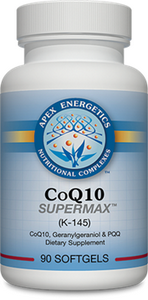 t for the purpose of bypassing the effects of statin medications without affecting their ability to lower cholesterol production. It is called CoQ10 Super Max. It is manufactured by the same supplement company I have used forever, Apex Energetics. If you are on statin medications, I would highly recommend you take this supplement at the same time. The same advice applies to those of you that are on bisphosphonate drugs for osteoporosis. It is not often that someone figures out how to gain the benefits of a drug and yet bypass the downside effects of such drugs. t for the purpose of bypassing the effects of statin medications without affecting their ability to lower cholesterol production. It is called CoQ10 Super Max. It is manufactured by the same supplement company I have used forever, Apex Energetics. If you are on statin medications, I would highly recommend you take this supplement at the same time. The same advice applies to those of you that are on bisphosphonate drugs for osteoporosis. It is not often that someone figures out how to gain the benefits of a drug and yet bypass the downside effects of such drugs.
But what if you do have the time to use a dietary app roach to lower your cholesterol levels? How do you do that? The answer to that is the same as the answer to solving metabolic syndrome and insulin resistance. The answer to this riddle will likely add many years to your life and improve the quality of your life. However, the answer is not easy. We use the problematic foods as mood-altering drugs to reduce anxiety. Sugar is a drug. Fats are drugs. Yes, they have value as energy sources for the body, but they also are addictive. Solving the metabolic riddle means breaking the addiction and finding healthier ways to handle the anxiety. roach to lower your cholesterol levels? How do you do that? The answer to that is the same as the answer to solving metabolic syndrome and insulin resistance. The answer to this riddle will likely add many years to your life and improve the quality of your life. However, the answer is not easy. We use the problematic foods as mood-altering drugs to reduce anxiety. Sugar is a drug. Fats are drugs. Yes, they have value as energy sources for the body, but they also are addictive. Solving the metabolic riddle means breaking the addiction and finding healthier ways to handle the anxiety.
To decrease insulin resistance, we need to let the bod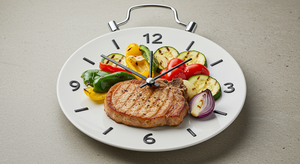 y spend frequent time without food coming into the system, kicking up insulin levels. That means stopping all snacking. Have 2 or 3 meals a day with about 4 hours between the meals. Eating the bulk of your calories before noon is shown to reduce insulin resistance. Following an 16:8 eating schedule, eating all food between 7 a.m. and 3 p.m. is the best. Eat at 7 a.m., 11 a.m., and 3pm. 8Am, noon, and 4 p.m. is acceptable, but no later. No food or caloric beverage between dinner and breakfast the next morning. Any carbs you eat should be complex, slow-digesting, high-fiber carbs or low-sugar fruits, and your fat sources need to be low in saturated fat as this carries cholesterol into your system. y spend frequent time without food coming into the system, kicking up insulin levels. That means stopping all snacking. Have 2 or 3 meals a day with about 4 hours between the meals. Eating the bulk of your calories before noon is shown to reduce insulin resistance. Following an 16:8 eating schedule, eating all food between 7 a.m. and 3 p.m. is the best. Eat at 7 a.m., 11 a.m., and 3pm. 8Am, noon, and 4 p.m. is acceptable, but no later. No food or caloric beverage between dinner and breakfast the next morning. Any carbs you eat should be complex, slow-digesting, high-fiber carbs or low-sugar fruits, and your fat sources need to be low in saturated fat as this carries cholesterol into your system.
If you want to get even better results, add in a 5-day period each month where you eat low-calorie – no more than 800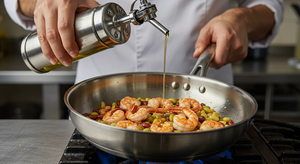 calories a day for 5 days. Nutrient ratios are critical here – carbohydrates: 60 to 80 calories from oats, flax, or legumes – complex, high-soluble fiber carbohydrates. Proteins: 80 to 100 calories from sources low in saturated fats like fish, shrimp, poultry, or protein powders. Fats: 440 to 520 calories with 40% from coconut oil or MCT oil, 40% from avocado or olive oil, and the rest from krill oil or algae oil and walnuts. We want to try to get at least 10 to 15 grams of soluble fiber per day from the carbs, but this can be hard, so I use inulin fiber added to water to achieve this. The fiber helps to bind the cholesterol and carry it out of the system. Add in a couple of grams of plant sterols to help block the absorption of cholesterol from the gut, plus bergamot citrus to reduce the liver production of cholesterol. Pomegranate juice and berberine have also been found to reduce cholesterol levels. Additionally 10,000 fu of systemic proteolytic enzymes like nattokinase or lumbrokinase have been found to actually reduce existing plaque formations in the arteries. These supplements can be used all the time, not just the 5-day boost protocol. Personally, I find that this 5-day protocol is easier if I spend the three days before getting into ketosis by cutting out carbs completely. calories a day for 5 days. Nutrient ratios are critical here – carbohydrates: 60 to 80 calories from oats, flax, or legumes – complex, high-soluble fiber carbohydrates. Proteins: 80 to 100 calories from sources low in saturated fats like fish, shrimp, poultry, or protein powders. Fats: 440 to 520 calories with 40% from coconut oil or MCT oil, 40% from avocado or olive oil, and the rest from krill oil or algae oil and walnuts. We want to try to get at least 10 to 15 grams of soluble fiber per day from the carbs, but this can be hard, so I use inulin fiber added to water to achieve this. The fiber helps to bind the cholesterol and carry it out of the system. Add in a couple of grams of plant sterols to help block the absorption of cholesterol from the gut, plus bergamot citrus to reduce the liver production of cholesterol. Pomegranate juice and berberine have also been found to reduce cholesterol levels. Additionally 10,000 fu of systemic proteolytic enzymes like nattokinase or lumbrokinase have been found to actually reduce existing plaque formations in the arteries. These supplements can be used all the time, not just the 5-day boost protocol. Personally, I find that this 5-day protocol is easier if I spend the three days before getting into ketosis by cutting out carbs completely.
The intermittent 16:8 fasting protocol will gradually bring your cholesterol levels down without any metabolically stress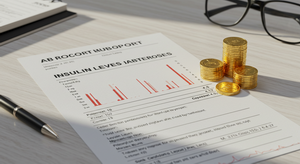 ful triggers that would cause the liver to pump up cholesterol production. Adding in the 5-day low-calorie protocol will just about double the speed of cholesterol level lowering. If you have the time to address the real cause behind high cholesterol levels, then this is the way to go. Even if you are already on statins, the underlying causes are still there, and this protocol is for you as well. You can use the CoQ10 super Max to prevent side effects while you solve the real issues. When do you quit? The gold standard for no insulin issues is when your fasting insulin levels get down to 3 to 5. Ignore the standard reference range of 3 to 25 as that is simply based on the averages for all Americans – not a good reference point. ful triggers that would cause the liver to pump up cholesterol production. Adding in the 5-day low-calorie protocol will just about double the speed of cholesterol level lowering. If you have the time to address the real cause behind high cholesterol levels, then this is the way to go. Even if you are already on statins, the underlying causes are still there, and this protocol is for you as well. You can use the CoQ10 super Max to prevent side effects while you solve the real issues. When do you quit? The gold standard for no insulin issues is when your fasting insulin levels get down to 3 to 5. Ignore the standard reference range of 3 to 25 as that is simply based on the averages for all Americans – not a good reference point.
This was a long article, but hopefully it has given you some actionable intel.
Take care,
David
Well here it is July already so Ellen is getting to work on designing our Christmas cards for this year. She likes to  have everything ready by the end of August. I had to load a new version of Photoshop Elements for her this morning, as her old version decided that it no longer wanted to talk to her printer. What you see here is Ellen working with a print of holly leaves on a transparency. She will modify this to her liking then cut it out to make a collage of various transparencies. Some how this all becomes a finished picture with a Holiday theme. have everything ready by the end of August. I had to load a new version of Photoshop Elements for her this morning, as her old version decided that it no longer wanted to talk to her printer. What you see here is Ellen working with a print of holly leaves on a transparency. She will modify this to her liking then cut it out to make a collage of various transparencies. Some how this all becomes a finished picture with a Holiday theme.
|

